The 30 Best Places to Live in Oregon: Top Cities and Towns

Oregon offers an exceptional quality of life across diverse communities, from bustling metropolitan areas to charming small towns nestled in scenic landscapes.
The state attracts residents with its commitment to sustainability, vibrant arts scenes, and access to both mountain recreation and coastal beauty.
This comprehensive guide examines the top residential destinations throughout Oregon, evaluating factors such as affordability, local amenities, employment opportunities, and community character.
The analysis covers major cities like Portland and Eugene alongside smaller communities such as Silverton and Stayton, providing insights into what makes each location unique for potential residents seeking their ideal Oregon home.
Here are the 30 best places to live in Oregon:
30. Bush Park

Bush Park ranks as one of Oregon’s top small cities with an A+ overall grade for livability. The city maintains excellent ratings for amenities and crime safety.
Home to just over 9,000 residents within 4.5 square miles, Bush Park offers a tight-knit community atmosphere. The low crime rate makes it particularly appealing for families and retirees.
Residents enjoy access to numerous parks, restaurants, and entertainment options. The Oregon Garden and historic Bush House Museum provide cultural attractions for locals and visitors.
The rural setting offers scenic beauty but comes with trade-offs. Limited public transportation and longer commutes to larger cities may challenge some residents.
Housing costs remain affordable compared to many Oregon communities. The varying neighborhood quality creates options across different price ranges for potential homebuyers.
29. Stayton
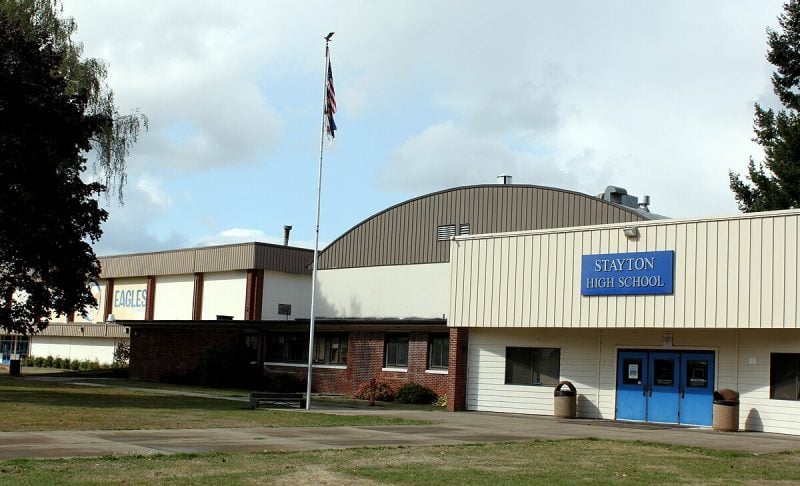
Stayton is a small city of approximately 8,000 residents located near the Cascade Mountains. The community offers a cozy small-town atmosphere with affordable living costs compared to other Oregon cities.
The poverty rate stands at 8.2%, which is 41% lower than the national average. The typical household earns $64,631 annually, slightly below the national median of $67,500.
Housing costs remain more affordable than most Oregon cities. Residents have access to shopping, dining, and outdoor recreation opportunities while maintaining that small-town feel.
The city attracts retirees seeking a slower pace of life. Neighborhood quality varies significantly throughout Stayton, with some areas commanding higher home values than others.
Stayton provides access to both mountain recreation and city amenities. The location offers a balance between rural tranquility and urban conveniences for those seeking affordable Oregon living.
28. Forest Grove
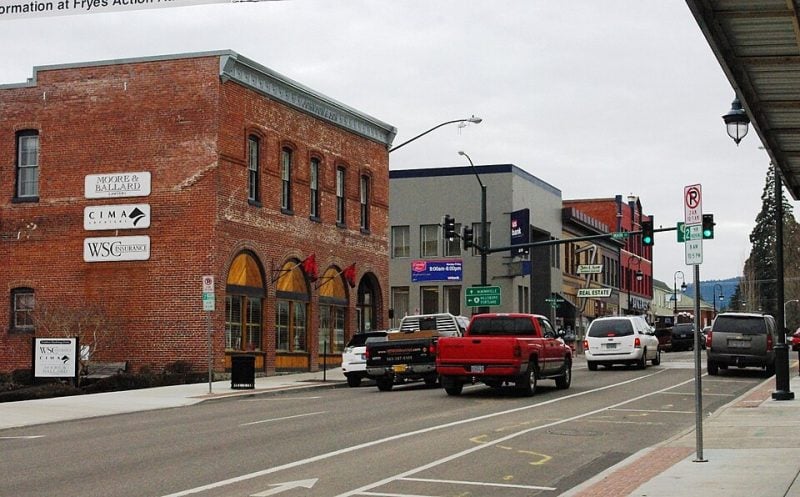
Forest Grove ranks among Oregon’s top places to live. The city offers low crime rates and strong job opportunities for residents.
Home prices in Forest Grove align with Oregon’s state average of $365,363. This makes housing relatively accessible compared to many metropolitan areas.
The city provides diverse housing options including single-family homes, townhomes, and apartments. This variety accommodates different lifestyle preferences and budgets.
Forest Grove maintains a tight-knit community atmosphere while offering easy access to larger cities. Residents benefit from small-town living without sacrificing urban amenities.
The area features abundant outdoor recreational activities. Natural attractions and parks provide numerous options for active lifestyles.
Living costs remain lower than many other Oregon locations. Combined with available employment opportunities, this creates favorable economic conditions for residents seeking affordability in the Pacific Northwest.
27. Newberg
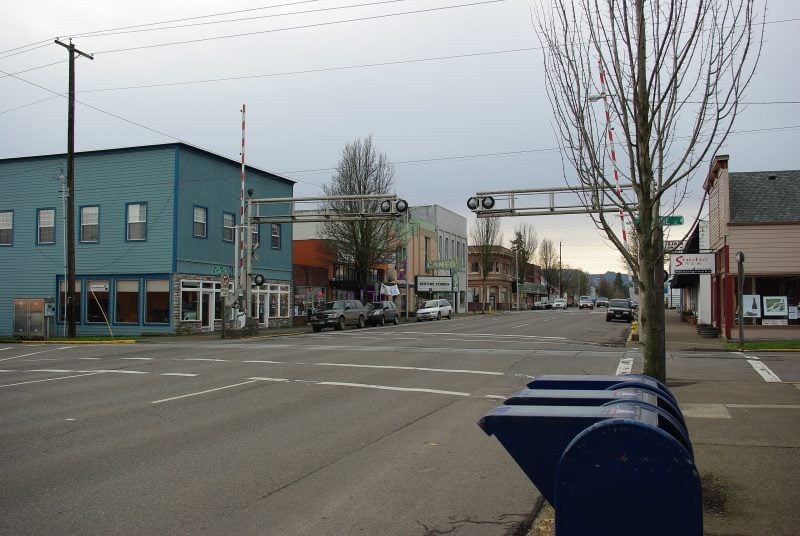
Newberg offers residents a comfortable suburban lifestyle in Yamhill County. The city has a population of approximately 25,600 people and maintains a family-friendly atmosphere.
Home prices in Newberg exceed Oregon’s state average of $365,363. Most residents own their homes rather than rent.
The city earns strong rankings across multiple quality of life categories. Newberg receives an overall score of 8.3 out of 10 from BestPlaces rankings.
Crime rates remain relatively low compared to other Oregon communities. The local economy shows diversity with job growth in healthcare, hospitality, technology, and finance sectors.
Newberg features numerous coffee shops and parks throughout the community. The public school system performs above average standards.
The typical household income reaches $75,225 annually, which surpasses the national median. The poverty rate sits at 9.5%, notably lower than the national average.
26. Canby
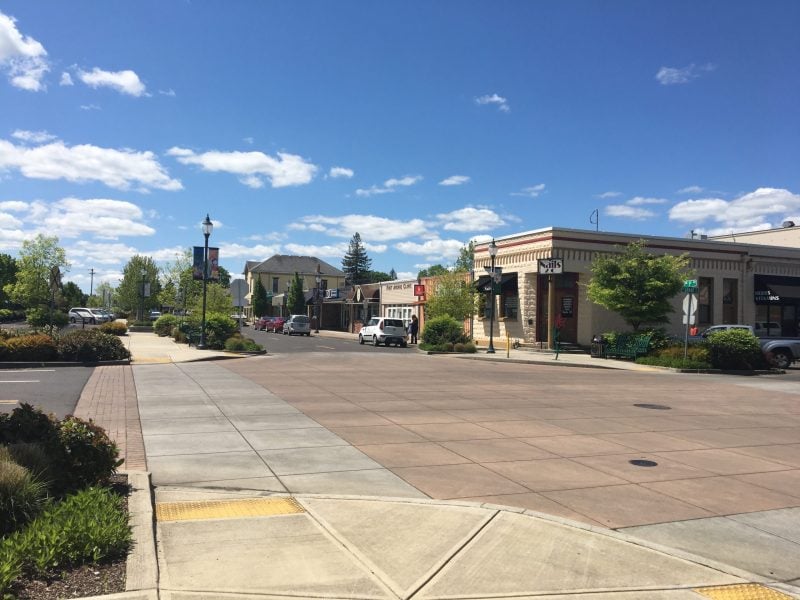
Canby ranks as the 30th best suburb to raise a family in Oregon according to 2025 data. The city offers quality public schools that contribute to its family-friendly reputation.
Located in Clackamas County, Canby provides residents with a suburban atmosphere. The housing market varies significantly across different neighborhoods within the city.
The community maintains relatively low crime rates compared to other Oregon cities. Local amenities and services support daily living needs for residents.
Canby’s location offers access to both urban conveniences and rural landscapes. The city attracts families seeking a balance between suburban comfort and proximity to larger metropolitan areas.
Housing values reflect the desirability of certain neighborhoods. The city continues to develop while maintaining its small-town character that appeals to many residents.
25. La Grande
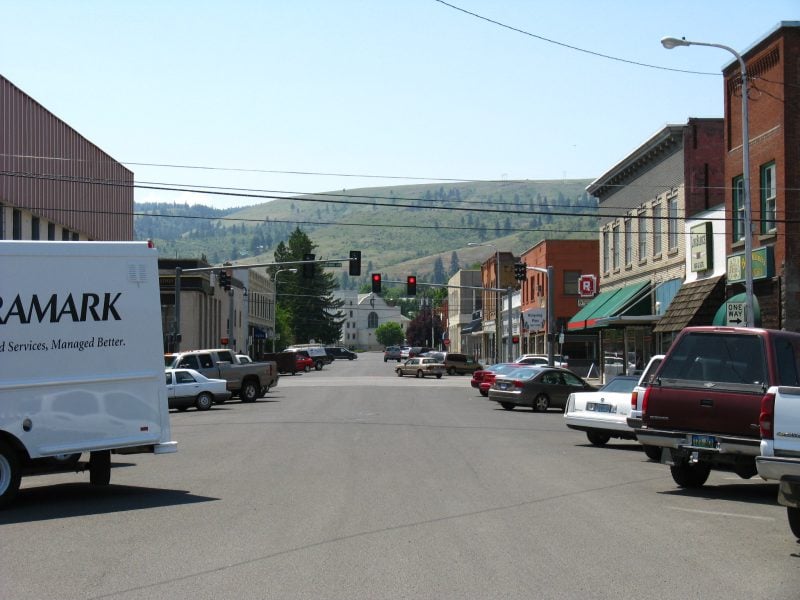
La Grande sits in Union County with a population of 13,059 residents. This northeast Oregon city offers a dense suburban atmosphere where most residents own their homes.
The community attracts many young professionals and maintains above-average public schools. Home prices remain significantly lower than Oregon’s state average of $365,363.
Outdoor enthusiasts enjoy access to Mount Joseph and Eagle Cap Wilderness areas. The city hosts the annual Farm City Pro Rodeo each August, drawing visitors for entertainment.
La Grande’s historic downtown district adds character to the area. The city provides various outdoor recreation opportunities throughout the year.
Residents experience a small-city lifestyle with access to natural attractions and community events. The location offers mountain views and wilderness access for those seeking outdoor activities.
24. Tualatin
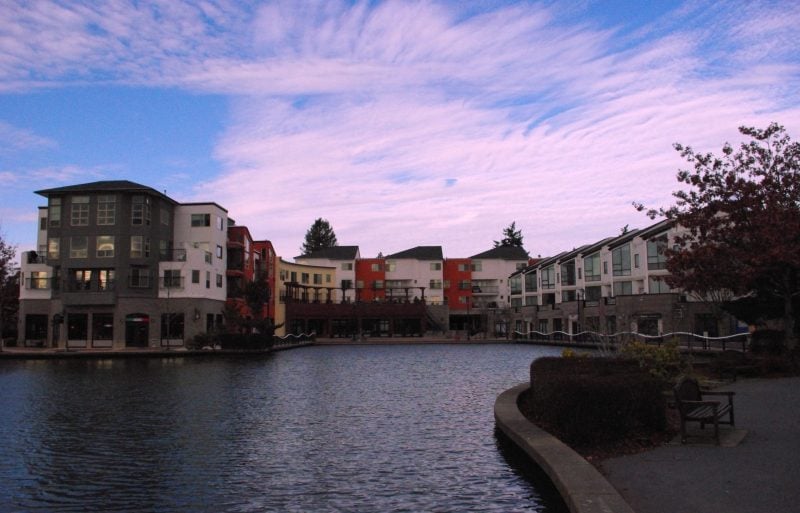
Tualatin is a suburb of Portland located in Washington County with a population of 27,710. The city offers residents an urban suburban mix with most people owning their homes.
The median household income in Tualatin is $92,454, significantly higher than the national median of $67,500. The poverty rate stands at 10.3%, which is 26% lower than the national average.
Tualatin receives strong ratings across multiple categories. The city scores 8 out of 10 for diversity and 7 out of 10 for education quality.
Residents enjoy access to numerous restaurants, coffee shops, and parks throughout the community. The city provides a vibrant atmosphere with various amenities for its residents.
Home prices in Tualatin exceed Oregon’s state average of $365,363. This reflects the desirability of the area and market demand for housing in the community.
23. Woodburn
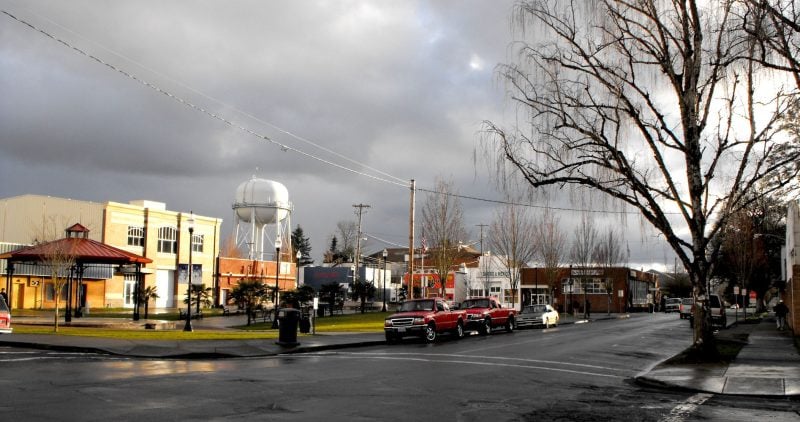
Woodburn sits in Oregon’s Willamette Valley in Marion County. The city offers convenient access to major urban centers through its location near Interstate 5.
Home prices in Woodburn remain below Oregon’s state average of $365,363. This affordability makes it attractive for homebuyers seeking value in the region.
The city receives a livability score of 71 out of 100 and ranks in the 81st percentile among American cities. Residents benefit from low cost of living and diverse economic opportunities.
Woodburn provides easy access to Portland and Salem for work and entertainment. The location offers proximity to outdoor recreation activities including fishing and golf courses.
The community maintains a tight-knit atmosphere while supporting a diverse population. Local amenities and outdoor recreation opportunities contribute to the city’s consistent rankings as a desirable place to live.
22. Keizer
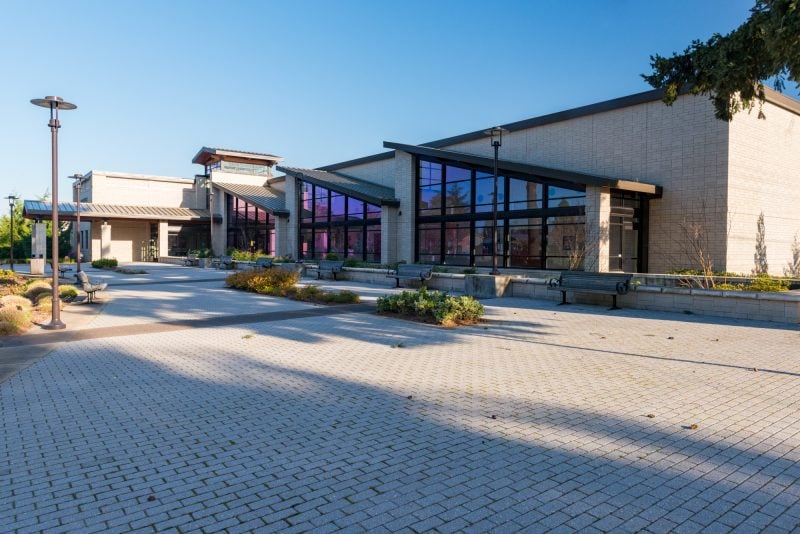
Keizer sits in Oregon’s Willamette Valley with a population of approximately 39,400 residents. The city combines suburban comfort with access to natural beauty.
The poverty rate stands at 10.3%, which is 26% below the national average. Typical households earn around $64,671 annually.
Housing costs remain below Oregon’s state average of $365,363. This makes Keizer more affordable than many other areas in the state.
The city scores 7.8 out of 10 on livability rankings, placing it among the better places to live in Oregon. Residents appreciate the community’s friendly atmosphere.
Keizer offers a mix of suburban amenities while maintaining proximity to larger metropolitan areas. The location provides convenient access to outdoor recreation and urban services.
21. Hermiston
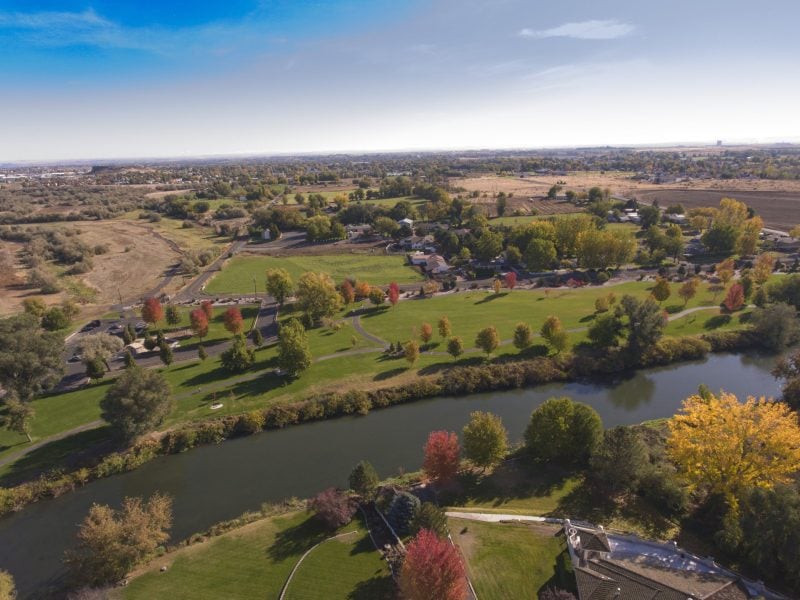
Hermiston ranks among Oregon’s most affordable cities with strong economic opportunities. The city maintains a livability score of 78 out of 100, exceeding both state and national averages.
Located in Umatilla County, Hermiston serves as the largest city in Northeastern Oregon with approximately 19,000 residents. The area functions as a major agricultural and transportation hub.
Home prices remain below Oregon’s state average of $365,363. Most residents own their homes and enjoy a dense suburban atmosphere with numerous parks throughout the city.
The local economy relies on agriculture, food processing, utilities, and light manufacturing. Major trucking companies use Hermiston as an interline hub, creating additional employment opportunities.
Public schools perform above average compared to state standards. The community attracts many families seeking affordable living costs and stable job markets in Eastern Oregon.
20. Ashland

Ashland sits in southern Oregon’s scenic Rogue Valley, just 15 miles from the California border. The city ranks 8th on national livability lists due to its excellent amenities and mild climate.
This small city of 21,000 residents offers 300 days of sunshine annually. The area features distinct seasons with moderate temperatures year-round.
Ashland is renowned for the Oregon Shakespeare Festival, creating a vibrant arts and culture scene. The downtown area maintains a sophisticated yet friendly small-town atmosphere.
Outdoor enthusiasts find abundant hiking, mountain biking, and skiing opportunities nearby. Mountains, lakes, and rivers surround the valley location.
Home prices exceed Oregon’s state average of $365,363. The median household income is $58,364, which falls below the national median of $67,500.
The city attracts residents seeking cultural activities combined with natural beauty and outdoor recreation.
19. Ontario
Ontario sits in eastern Oregon near the Idaho border with a population of 11,728 residents. The city serves as Malheur County’s commercial hub for surrounding rural areas.
Home prices in Ontario remain significantly below Oregon’s state average of $365,363. Most residents own their homes in this dense suburban community.
The city functions as a regional business center, attracting commerce and tourism from both Oregon and Idaho. Ontario offers various shopping, dining, and entertainment options for residents.
Cultural attractions include the Four Rivers Cultural Center and several museums highlighting local history. The public schools in Ontario perform above average compared to state standards.
Residents tend to lean conservative politically and appreciate the small-town atmosphere. The community maintains a friendly, peaceful environment while providing essential services and amenities.
18. Redmond
Redmond sits in Central Oregon’s high desert with a population of approximately 31,000 residents. The city serves as a gateway to outdoor recreation opportunities throughout Deschutes County.
The median household income reaches $64,852, slightly below the national average. Redmond maintains a poverty rate of 9.8%, which is 30% lower than the national figure.
Outdoor enthusiasts find year-round activities including skiing, hiking, fishing, and mountain biking. The city’s location provides access to Central Oregon’s natural attractions and recreational areas.
Redmond emphasizes sustainability and renewable energy initiatives. The community focuses on environmental protection while maintaining its small-town character.
Housing costs vary significantly across different neighborhoods within the city. The best areas are typically determined by median home values and local amenities.
Residents benefit from the city’s friendly community atmosphere and Central Oregon’s scenic high desert landscape.
17. Grants Pass
Grants Pass offers residents a blend of natural beauty and small-town charm in southern Oregon. The city sits along the Rogue River and provides easy access to outdoor recreation.
Home prices in Grants Pass remain below Oregon’s state average of $365,363. This affordability attracts people seeking value in the housing market.
The community prioritizes a laid-back lifestyle with strong neighborhood connections. Residents appreciate the peaceful atmosphere and welcoming environment.
Outdoor enthusiasts find abundant opportunities for hiking, fishing, and river activities. The surrounding geography includes forests and mountains within short driving distances.
The local economy maintains stability through diverse industries. Many residents choose Grants Pass for its balance of amenities and rural character.
Fruitdale ranks among the most popular neighborhoods in the area. The city appeals to those seeking tranquility without sacrificing access to essential services and recreational activities.
16. McMinnville
McMinnville sits in the heart of Oregon’s wine country, about 50 miles southwest of Portland. The city serves as the gateway to the renowned Willamette Valley wine region.
Home to approximately 35,000 residents, McMinnville offers a blend of small-town charm and urban amenities. The downtown area features numerous coffee shops, parks, and local businesses.
McMinnville ranks as the 7th best place to live in Oregon according to rankings data. The city scores well in jobs, diversity, housing, healthcare, and education categories.
The local job market remains strong with an unemployment rate of 3.8%, below the national average. Housing costs are more affordable compared to Oregon’s state average of $365,363.
Most residents own their homes and enjoy a dense suburban lifestyle. The community attracts families and young professionals who appreciate the proximity to wine country and outdoor recreation opportunities.
15. Gresham
Gresham sits just outside Portland with a population of 112,818 residents. This suburban city offers families a dense suburban feel where most residents own their homes.
The city provides easy access to the Columbia River Gorge. Residents enjoy stunning natural beauty with numerous trails and parks nearby.
Gresham maintains a lower cost of living compared to Portland. The community features friendly neighborhoods that welcome new residents.
Several notable neighborhoods stand out in Gresham. Gresham Butte offers upscale homes with scenic views, while Historic Downtown provides a walkable urban environment.
Kelly Creek attracts families with good schools and parks. Powell Valley features newer developments with a strong community atmosphere.
The city supports an active lifestyle with many outdoor recreation opportunities. Residents can explore local shopping at Rockwood Village and Gresham Station Shopping Centers.
Gresham combines suburban comfort with urban amenities, making it attractive for families seeking proximity to Portland.
14. Springfield
Springfield offers residents affordable housing options compared to Oregon’s state average of $365,363. The city maintains a low crime rate and provides excellent public schools for families.
Modern amenities abound throughout Springfield, including shopping centers, restaurants, and numerous parks. Recreation areas give residents plenty of outdoor activity options.
Downtown Springfield has undergone recent revitalization efforts. The area now combines historic charm with contemporary conveniences for residents and visitors.
Glenwood represents an emerging neighborhood within Springfield. This area shows strong potential for future growth and development opportunities.
The city provides diverse neighborhoods that cater to different lifestyle preferences. Each area offers unique features and community amenities for residents to enjoy.
13. Tigard
Tigard serves as a Portland suburb that combines small-town charm with metropolitan accessibility. The city maintains a population of approximately 54,000 residents in northwestern Oregon.
The community enjoys strong economic conditions with a median household income of $86,757. This exceeds the national average by a significant margin while maintaining a poverty rate of just 7.8%.
Home prices in Tigard surpass Oregon’s state average of $365,363. The higher housing costs reflect the area’s desirable location and quality amenities.
Residents benefit from highly rated schools and well-maintained neighborhoods throughout the city. The area features numerous parks and outdoor recreational opportunities.
Tigard’s downtown area supports local businesses and seasonal farmers markets. Award-winning restaurants contribute to the city’s dining scene.
The location provides convenient access to nearby cities including Tualatin, Lake Oswego, and Beaverton. This positioning allows residents to enjoy suburban living while remaining connected to the broader Portland metropolitan region.
12. Milwaukie
Milwaukie sits just outside Portland in Clackamas County with a population of 21,256. The city offers residents a dense suburban feel while maintaining proximity to urban amenities.
Most residents own their homes in this stable community. The area attracts young professionals who appreciate the balance between suburban living and city access.
Milwaukie features numerous bars, restaurants, coffee shops, and parks throughout the city. These amenities contribute to an active local social scene.
The community tends to lean conservative politically. Residents enjoy lower crime rates compared to nearby urban areas.
Housing values vary significantly across different neighborhoods within the city. The real estate market reflects this disparity in pricing and quality.
Milwaukie provides easy access to Portland while offering more space and affordability. The city serves as an attractive option for those seeking suburban comfort near metropolitan opportunities.
11. Sherwood
Sherwood sits in Washington County as a suburb of Portland with a population of 20,227. The city offers residents a sparse suburban feel with excellent access to outdoor activities.
Most residents own their homes in this family-friendly community. The area features numerous parks and highly rated public schools that attract many families.
Home prices in Sherwood exceed Oregon’s state average of $365,363. The higher cost reflects the desirable location and quality amenities available to residents.
The city provides easy access to hiking, biking, and golfing opportunities. Its location southwest of Portland allows residents to enjoy both suburban tranquility and urban conveniences.
Sherwood combines modern amenities with a peaceful setting. The community attracts both families and young professionals seeking quality suburban living near a major metropolitan area.
10. West Linn
West Linn stands as one of Oregon’s premier suburban communities. This Clackamas County city houses approximately 27,000 residents just outside Portland.
The city consistently earns recognition as one of the best places to live in Oregon. Money Magazine selected West Linn as a top destination in America for its strong local economy and community character.
Residents enjoy a sparse suburban atmosphere with high homeownership rates. The area features numerous restaurants, coffee shops, and parks that serve the community.
West Linn offers excellent access to natural beauty and outdoor recreation opportunities. The city maintains a strong sense of community among its residents.
Housing costs exceed Oregon’s state average significantly. The higher prices reflect the area’s desirability and market demand for this well-regarded community.
9. Lake Oswego
Lake Oswego sits just 8 miles south of Portland in Clackamas County. This affluent suburb centers around a 405-acre lake that shares its name.
The city offers over 600 acres of parkland for outdoor recreation. Residents enjoy fishing, hiking, and camping opportunities throughout the area. More than 460 acres consist of natural and open space areas.
Lake Oswego provides access to the Willamette River for additional water activities. The community features attractions like Tryon Creek State Natural Area and Cooks Butte for nature enthusiasts.
Home prices significantly exceed Oregon’s state average of $365,363. The higher cost reflects the city’s desirable location and quality amenities.
Residents can shop at Bridgeport Village Mall and dine at various restaurants. The combination of natural beauty and urban conveniences attracts many families to this Portland suburb.
8. Beaverton
Beaverton ranks as the seventh-best place to live in Oregon and offers an exceptional quality of life. The city sits between the West Hills and Tualatin Valley farmlands, providing both urban amenities and suburban charm.
With a population of 97,502, Beaverton delivers an urban-suburban mix that appeals to diverse residents. Most people rent their homes in this Washington County community.
The city features excellent schools and lush, tree-filled neighborhoods. Over 90 park sites provide abundant recreational opportunities throughout the greater Beaverton area.
Residents enjoy miles of hiking trails, golf courses, and outdoor sports fields. The food scene receives regular recognition for its quality and diversity.
Central Beaverton offers downtown shopping and dining with easy public transportation access. Neighborhoods like Sexton Mountain and Murrayhill provide upscale living options with excellent schools and parks.
7. Hillsboro
Hillsboro sits just minutes outside Portland, surrounded by farmland and vineyards. The city has earned recognition as one of the top places to live in the United States.
Known as the heart of Oregon’s Silicon Forest, Hillsboro hosts major technology companies including Intel, IBM, Oracle, and Salesforce. This creates a strong job market for residents.
The city offers excellent public schools and maintains a vibrant cultural scene. Families and young professionals make up much of the population.
Hillsboro provides an urban-suburban mix with numerous coffee shops and parks throughout the area. Most residents own their homes in this Washington County community.
The Amberglen neighborhood exemplifies the city’s appeal, blending suburban living with commercial business and educational facilities. Housing quality varies significantly across different neighborhoods within the city.
6. Corvallis
Corvallis sits in the heart of Oregon’s Willamette Valley, positioned between the Coast and Cascade Mountain ranges. The city serves as home to Oregon State University and maintains a population of approximately 60,424 residents.
The city consistently ranks among Oregon’s best places to live. Its strong educational system, thriving business climate, and abundant recreational opportunities contribute to this reputation.
Corvallis offers residents an urban-suburban blend with numerous restaurants, coffee shops, and parks. Most residents rent their homes, reflecting the city’s significant student population.
Several neighborhoods provide distinct living experiences. Northwest Corvallis features upscale homes near McDonald-Dunn Forest, while Timberhill offers newer construction with valley views.
Downtown provides walkable urban living. Witham Hill sits close to the university campus with diverse housing options. South Corvallis emphasizes community gardens and environmental initiatives.
5. Medford
Medford sits in southern Oregon’s Jackson County with a population of 85,794 residents. The city offers a dense suburban feel where most residents own their homes.
Located 30 miles north of the California border along I-5, Medford provides easy access to outdoor recreation. Crater Lake National Park and the Cascade Mountains are nearby attractions.
The city receives high livability rankings with a score of 67 out of 100, above the national average. Public schools in Medford perform above average compared to state standards.
Residents enjoy a mild climate and abundant coffee shops and parks throughout the community. The area attracts both families and young professionals seeking small-town charm.
Home prices in Medford remain below Oregon’s state average of $365,363. The city combines modern amenities with access to natural beauty including the Rogue River and surrounding forests.
4. Salem
Salem serves as Oregon’s capital city and ranks 37th among the state’s best places to live. The city sits in the heart of the Willamette Valley, approximately 50 miles south of Portland.
Residents enjoy a high quality of life with access to natural resources and diverse neighborhoods. The city offers a blend of urban amenities and natural beauty throughout the region.
Salem’s economy provides strong job opportunities for residents. Home prices remain below the state average of $365,363, making it more affordable than many Oregon cities.
The mild climate supports year-round outdoor activities. Salem’s location in the Willamette Valley provides easy access to both urban centers and natural areas.
The city features walkable communities and various housing options. Transportation around Salem is convenient, with multiple neighborhoods offering different lifestyle preferences for residents.
3. Eugene
Eugene ranks as Oregon’s second-largest city with over 167,000 residents. The city consistently appears on best places to live lists for 2025.
Located in the Willamette Valley, Eugene offers diverse neighborhoods for different lifestyles. The Friendly/College Hill area stands out as particularly desirable for future growth potential.
The Northeast neighborhood provides convenient access to amenities. It sits between the city limits, Game Farm Road, Beltline Road, and the Willamette River.
Eugene attracts residents with its vibrant arts scene and cultural offerings. The Hult Center for the Performing Arts hosts symphony, ballet, and concert performances.
Outdoor recreation opportunities abound throughout the region. The city serves as a gateway for exploring the Pacific Northwest.
Eugene’s economy benefits from its role as a university town. The presence of the University of Oregon contributes to the city’s educational and cultural atmosphere.
2. Bend
Bend has emerged as one of Oregon’s most desirable cities, attracting residents with its stunning mountain views and outdoor recreation opportunities. The city sits in central Oregon and offers year-round sunshine along with access to hiking, skiing, and water sports.
The downtown area features a vibrant scene with local breweries, restaurants, and shops. Tree-lined neighborhoods like Old Bend provide walkable access to the Deschutes River and Drake Park.
Bend’s rapid growth reflects its appeal to families and young professionals. The city combines small-town charm with modern amenities and cultural attractions like the High Desert Museum.
Multiple neighborhoods cater to different lifestyles, from historic districts to newer developments. The proximity to Deschutes National Forest and Cascade Lakes makes it ideal for nature enthusiasts seeking an active lifestyle.
1. Portland
Portland stands as Oregon’s largest city and cultural hub. The metropolitan area offers diverse neighborhoods that cater to different lifestyles and preferences.
Downtown Portland serves as the urban heart with walkable streets and easy access to dining, shopping, and nightlife. The area blends city living with nearby nature access.
Northwest Portland features tree-lined streets with historic charm and modern amenities. The Pearl District attracts residents seeking upscale lofts, art galleries, and trendy nightlife options.
The city provides excellent public transportation and bike-friendly infrastructure. Residents enjoy numerous parks, trails, and gardens including Washington Park and Tom McCall Waterfront Park.
Portland’s food scene, breweries, and coffee culture contribute to its appeal. The city maintains a strong environmental focus and offers tax-free shopping benefits.
Housing costs vary significantly by neighborhood, with options ranging from affordable areas to premium districts.
Understanding Oregon’s Quality of Life
Oregon offers residents a balanced lifestyle with diverse economic opportunities, strong educational systems, and vibrant cultural communities. The state’s quality of life stems from competitive job markets in technology and healthcare, along with accessible education and recreational amenities.
Economic Opportunities and Job Market
Oregon’s economy centers on technology, healthcare, manufacturing, and agriculture. Major employers include Nike, Intel, and Columbia Sportswear, providing stable career paths across various skill levels.
The Portland metro area drives much of the state’s economic growth. Tech companies and startups concentrate in this region, offering competitive salaries and benefits. Average household income in Oregon reaches approximately $70,000 annually.
Key Industries:
- Technology and software development
- Healthcare and medical services
- Manufacturing and food processing
- Tourism and outdoor recreation
Unemployment rates remain below national averages in most metropolitan areas. Cities like Bend and Corvallis show particularly strong job growth in recent years.
Rural areas depend heavily on agriculture, forestry, and tourism. These sectors provide seasonal employment but may offer fewer year-round opportunities compared to urban centers.
Community and Culture
Oregon communities emphasize environmental consciousness and outdoor recreation. Residents participate actively in local farmers markets, community gardens, and conservation efforts.
The state supports diverse cultural activities. Portland hosts numerous festivals, art galleries, and music venues throughout the year. Smaller cities like Ashland feature renowned theater productions and cultural events.
Cultural Highlights:
- Oregon Shakespeare Festival in Ashland
- Portland’s food truck scene and craft breweries
- Annual music and arts festivals statewide
Community involvement runs high across Oregon cities. Neighborhoods organize regular events, volunteer programs, and local governance participation. This creates strong social connections between residents.
Oregon’s “no sales tax” policy appeals to many families. The absence of sales tax reduces daily living costs, though income taxes remain higher than some neighboring states.
Access to Healthcare and Education
Oregon maintains well-regarded public school systems, particularly in suburban areas. Districts in Lake Oswego, West Linn, and Bend consistently rank among the state’s top performers academically.
The University of Oregon and Oregon State University provide quality higher education options. These institutions offer research opportunities and contribute to local economies through student populations and employment.
Healthcare Access:
- Oregon Health & Science University (OHSU) system
- Kaiser Permanente network coverage
- Rural health clinics in smaller communities
Healthcare coverage reaches most residents through expanded Medicaid programs. Oregon pioneered healthcare reform initiatives that improve access for low-income families.
Medical facilities concentrate in larger cities like Portland, Eugene, and Salem. Rural residents may travel longer distances for specialized care, though telemedicine services help bridge geographic gaps.
Factors Shaping Oregon’s Most Desirable Living Areas
Oregon’s appeal stems from its diverse natural landscapes, well-developed transportation networks, and varied climate zones that offer residents distinct lifestyle advantages across different regions.
Natural Environment and Outdoor Recreation
Oregon’s geography creates distinct living environments that attract different demographics. The Cascade Range divides the state into contrasting regions, with lush forests west of the mountains and high desert terrain to the east.
Coastal communities like Florence offer ocean access and mild temperatures. Residents enjoy beach activities, fishing, and scenic drives along Highway 101.
The Willamette Valley provides fertile farmland and rolling hills. Cities like Salem and Eugene benefit from proximity to both mountains and coast within two hours’ drive.
Mountain communities such as Bend attract outdoor enthusiasts year-round:
- Winter skiing and snowboarding
- Summer hiking and mountain biking
- Rock climbing and fishing opportunities
- National forest access
Urban areas like Portland maintain extensive park systems. Forest Park spans over 5,000 acres within city limits, while the Columbia River Gorge offers waterfalls and hiking trails thirty minutes from downtown.
Transportation and Infrastructure
Oregon’s transportation network significantly impacts livability across different regions. Interstate 5 connects major population centers from Portland south to California, creating economic corridors that support job growth.
Portland’s public transit system includes MAX light rail, streetcars, and buses. The comprehensive network reduces car dependency and connects suburbs to downtown employment centers.
Rural connectivity varies considerably:
- Eastern Oregon relies heavily on highways and personal vehicles
- Smaller cities like Ashland have limited public transit options
- Coastal areas depend on scenic but slower highway routes
Internet infrastructure affects remote work capabilities. Urban areas provide high-speed fiber connections, while some rural communities still face limited broadband access.
Oregon’s bike-friendly infrastructure attracts cycling enthusiasts. Portland consistently ranks among America’s most bikeable cities with dedicated lanes and bike-sharing programs.
Climate Considerations
Oregon’s climate zones create distinct living experiences across the state. Western Oregon experiences a Mediterranean climate with wet winters and dry summers.
The Willamette Valley receives 40-60 inches of annual rainfall, primarily between November and April. Summer months feature clear skies and temperatures in the 70s-80s Fahrenheit.
Eastern Oregon presents contrasting conditions:
- Semi-arid climate with hot summers
- Cold winters with occasional snow
- Lower annual precipitation (10-15 inches)
- Greater temperature extremes
Coastal areas maintain moderate temperatures year-round. Ocean influence keeps summer highs in the 60s-70s and winter lows rarely drop below freezing.
Mountain regions experience alpine conditions with heavy snowfall. Ski areas like Mount Hood receive over 300 inches annually, supporting winter recreation economies.
Air quality remains generally excellent statewide, though wildfire smoke occasionally affects visibility during late summer months.





